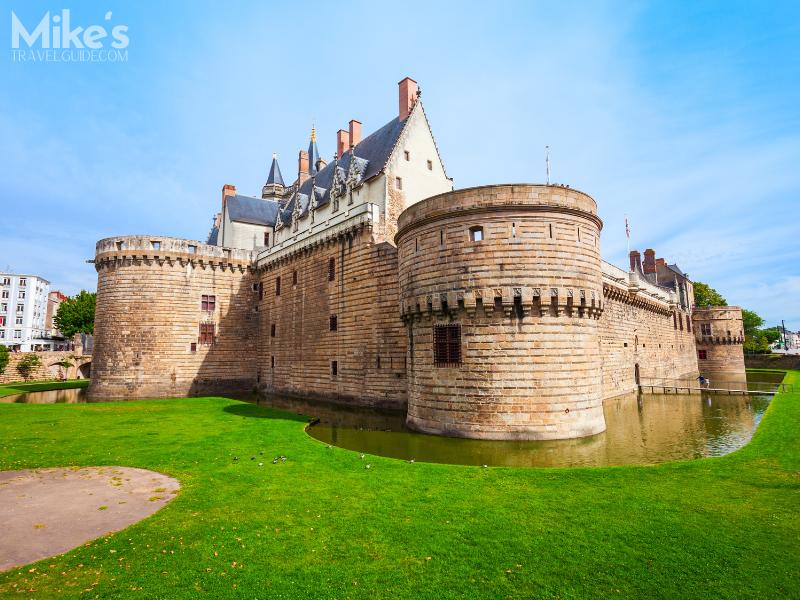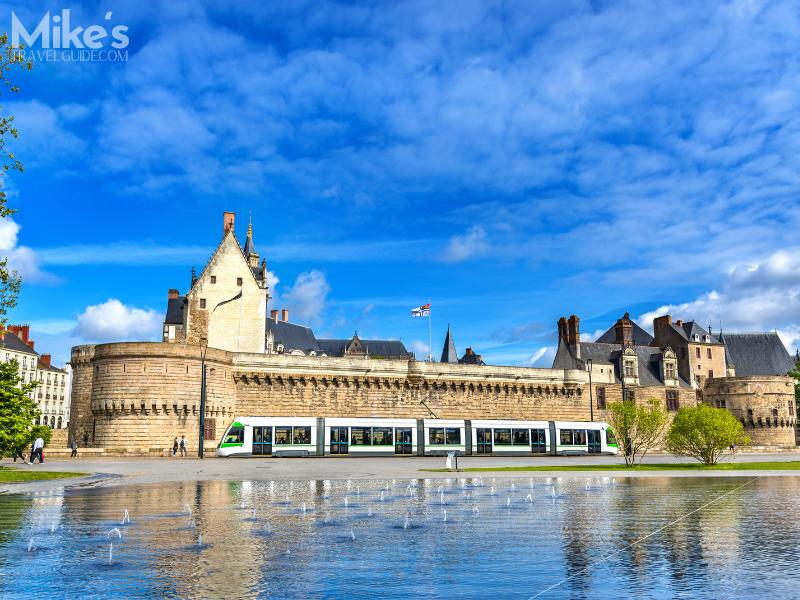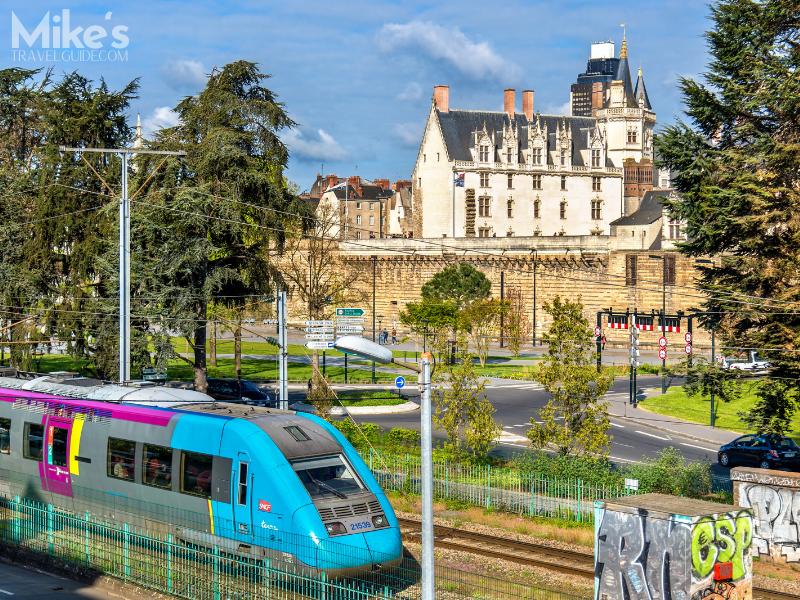One of Nantes’ most significant historical landmarks is the Château des Ducs de Bretagne. Listed as a historical monument for over 170 years, this Castle of the Dukes of Brittany is not only a symbol of the city’s rich history but also houses the Urban History Museum and serves as a popular gathering spot for locals.
The Historical Fortress

The current castle, surrounded by a moat and ramparts, was constructed in the 15th century for Francois II, the last Duke of Brittany. It stands on the site of a former 13th-century fortified palace called La Tour Neuve. Throughout its history, the castle has served as a military fortress and royal residence, notably home to Duchess Anne of Brittany, who was twice crowned Queen of France before the age of 25.
Explore the Courtyard
Cross the bridge over the moat and enter the fortress courtyard, where you’ll see an octagonal wellhead adorned with an ornate wrought iron crown. Surrounding you are the various buildings that make up the heart of the castle:
- Le Grand Logis: This five-story building, with a basement level, was built in two stages: the first four levels under Francois II and the top two under Duchess Anne.
- The Golden Crown Tower: Named for the nearby well, this tower connects the Grand Logis and the Grand Gouvernement. Its loggias, built for Duchess Anne, offer views of the Loire River.
- Le Grand Gouvernement: Once the Ducal Palace, this building now displays the Coat of Arms of Louis XIV above its doorway. Inside, the chestnut vaulted ceiling resembles an upside-down ship’s hull.
- Le Petit Gouvernement: Also known as the Logis du Roi (King’s Home), this simple building dates back to the 16th century and is believed to be the site of the signing of the Edict of Nantes, which ended the French Wars of Religion.
Additional Structures
- Le Harnachement: This symmetrical building, formerly a munitions warehouse, now hosts temporary exhibits.
- Le Vieux Donjon: A 14th-century granite tower, part of the renovations during Jean IV’s reign. It now houses the Café Restaurant les Oubliettes along with the adjoining Conciergerie.
Touring the Castle
Your visit to the castle will take you through a labyrinth of chambers, stairways, and walkways. Highlights include the Jacobins’ Room with its footbridges and hanging chimney, and the Tour des Anglais (Englishman’s Tower) with its unique graffitied wall.

Urban History Museum
The castle also houses the Musée d’histoire urbaine, showcasing objects that reflect Nantes’ history as the Seat of the Duchy of Brittany, a thriving trade center, an industrial port, and a modern city. The museum’s collection includes maps, models, paintings, sculptures, and other artifacts, all enhanced by multimedia installations and a mobile app guide available for visitors.
Public Spaces and Events
The courtyard and ramparts are open to the public and often serve as communal gathering spots. You’ll find large picnic tables for enjoying meals on the grounds, and the rampart walls are sometimes used for evening light shows.
Getting There

The Castle of the Dukes of Brittany is located at 4 Place Marc Elder, directly across from the tourist information center (TI).
Ticket Information
- Castle Museum Admission: €5.00 (free with the Nantes City Card); fees may apply for temporary exhibits.
- Courtyard and Ramparts Admission: Free
Travel Tip
Download the free Nantes Musée guide app compatible with Apple, Android, and Windows Mobile devices. If you don’t have your own mobile device, you can borrow one at the museum ticket booth.
Visiting the Castle of the Dukes of Brittany provides a fascinating journey through history and a delightful experience of Nantes’ cultural heritage.
